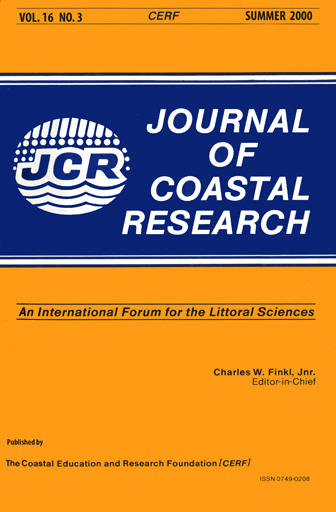Clostridium perfringens in Long Island Sound Sediments: An Urban Sedimentary Record
Keywords:
Bacteria, coastal zone management, contaminant, environment, fecal, metal, pollutants, pollution, population, quality, sewage, toxicityAbstract
Clostridium perfringens is a conservative tracer and an indicator of sewage-derived pollution in the marine environment. The distribution of Clostridium perfringens spores was measured in sediments from Long Island Sound, USA, as part of a regional study designed to: (1) map the distribution of contaminated sediments; (2) determine transport and dispersal paths; (3) identify the locations of sediment and contaminant focusing; and (4) constrain predictive models. In 1996, sediment cores were collected at 58 stations, and surface sediments were collected at 219 locations throughout the Sound. Elevated concentrations of Clostridium perfringens in the sediments indicate that sewage pollution is present throughout Long Island Sound and has persisted for more than a century. Concentrations range from undetectable amounts to 15,000 spores/g dry sediment and are above background levels in the upper 30 cm at nearly all core locations. Sediment focusing strongly impacts the accumulation of Clostridium perfringens spores. Inventories in the cores range from 28 to 70,000 spores/cm2, and elevated concentrations can extend to depths of 50 cm. The steep gradients in Clostridium perfringens profiles in muddier cores contrast with concentrations that are generally constant with depth in sandier cores. Clostridium perfringens concentrations rarely decrease in the uppermost sediment, unlike those reported for metal contaminants. Concentrations in surface sediments are highest in the western end of the Sound, very low in the eastern region, and intermediate in the central part. This pattern reflects winnowing and focusing of Clostridium perfringens spores and fine-grained sediment by the hydrodynamic regime; however, the proximity of sewage sources to the westernmost Sound locally enhances the Clostridium perfringens signals.


